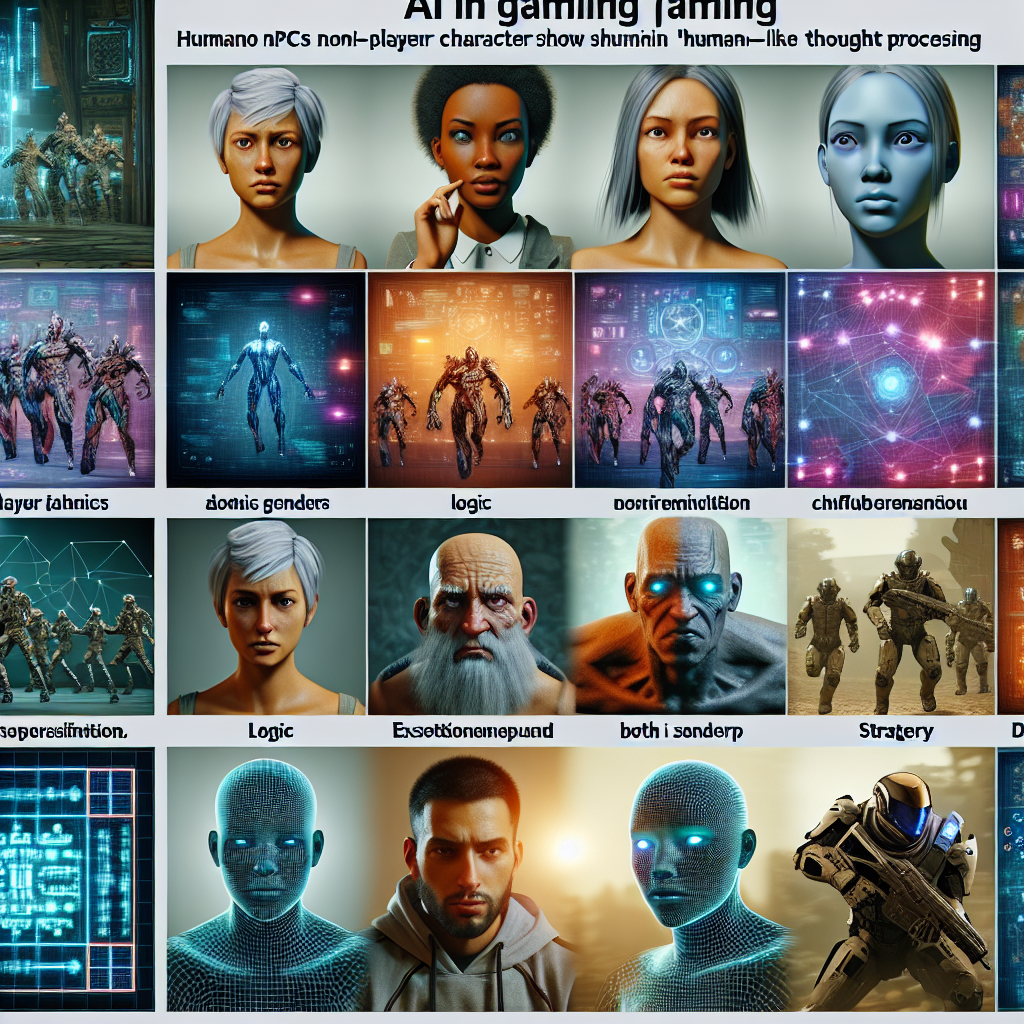Human-Like NPCs Powered by AI
In 1998, a stunned crowd of gamers watched as a computer-controlled dinosaur in Unreal dodged and weaved around obstacles in ways they’d never seen. That was one of the first glimpses of advanced AI in video games. Fast forward to today, and human-like NPCs powered by AI are no longer science fiction—they’re changing how we play, feel, and interact with games.
What Makes an NPC “Human-Like”?
Historically, game NPCs (non-playable characters) have operated on scripted dialogue and simple decision trees. Players quickly learned to anticipate their patterns, leading to repetitive and predictable gameplay. Today, thanks to machine learning, natural language processing (NLP), and neural networks, developers are now crafting NPCs that react dynamically to player input, remember past encounters, and create unique interactions every time you play.
Intelligence That Learns and Adapts
AI-driven NPCs no longer just follow pre-written paths—they adapt. They learn from players’ behavior using reinforcement learning algorithms. Encounter aggressiveness from a player once, and the next time, your NPC ally might hesitate, or an enemy may call for backup instead of charging blindly.
Examples include characters who pick up verbal cues through voice recognition or text and adjust their tones accordingly. Games utilizing transformer-based language models like GPT-4 are able to inject player conversations into the narrative in compelling, unscripted ways.
The Technology Behind the Behavior
The rise of large language models and advanced AI frameworks has given birth to NPCs capable of:
- Maintaining memory across gameplay sessions
- Understanding natural language inputs beyond keyword matching
- Generating unique dialogue on the fly
- Adapting strategies based on player decisions and outcomes
GPT-based engines and sophisticated game AI middleware are being built directly into engines like Unity and Unreal Engine, making this tech accessible even for indie developers.
Impacts on Player Experience
Human-like NPCs powered by AI unlock emotional connections rarely seen in traditional games. Players form attachments, feel guilt for betrayals, or surprise when an NPC recognizes them—or even warns them of forgotten past actions.
This level of interactivity pushes games closer to immersive simulations, where NPCs feel alive and consequences truly matter. It also widens the possibilities for open-world games, where narratives no longer hinge solely on scripted plot points but evolve based on emergent player behavior.
Challenges and Ethical Considerations
Of course, this future brings complex questions: How much agency should AI characters have? Could realistic AI characters be used manipulatively or offensively? Developers need to set clear boundaries to ensure player safety and ethical game design.
Looking Ahead
We’re standing on the threshold of games that will remember not just what we’ve done, but who we are to them. With continuous improvements in AI, the boundary between player and programmed character will blur further, opening up expansive new storytelling and gameplay possibilities.
For a deeper dive into the AI systems fueling realistic game characters, check out this feature on AI NPCs in Skyrim.
One thing is clear: as developers strive for immersion, human-like NPCs powered by AI will be the new gold standard for interactive storytelling.

